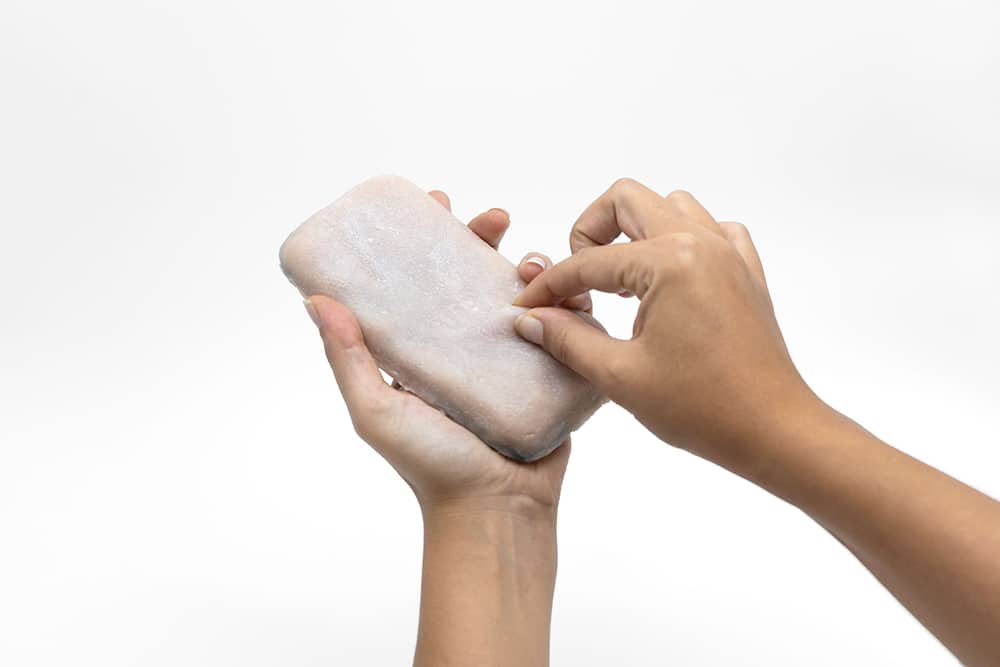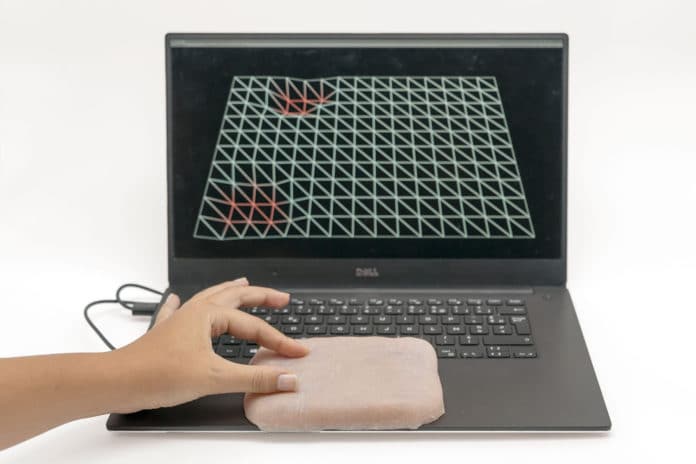Scientists from the University of Bristol, in partnership with Telecomm ParisTech and Sorbonne University, have succeeded in creating an artificial, skin-like membrane that mimics the appearance of human skin and also its sensing capabilities. The team calls this membrane “Skin-On.”
The artificial skin allows your devices like phones, wearables, or computers to sense interactions such as tickling, caressing, even twisting or pinching, and “feel” the user’s grip. The researchers believe that their invention could be extremely useful for our current uses.
A small revolution in the world of touch
The innovation is particularly interesting that shows we can create something similar to human skin. The membrane made by researchers consists of a multi-layer silicon membrane, including a surface textured layer, an electrode layer of conductive threads, and a hypodermis layer.
For Dr. Anne Roudaut, Research Director and Member of the University of Bristol, “This is the first time we have the opportunity to add skin to our interactive devices. The idea is perhaps a bit surprising, but the skin is an interface we are highly familiar with, so why not use it and its richness with the devices we use every day?”

“Artificial skin has been widely studied in the field of Robotics but with a focus on safety, sensing, or cosmetic aims. This is the first research we are aware of that looks at exploiting realistic artificial skin as a new input method for augmenting devices,” said Marc Teyssier, the lead author.
What exactly is this artificial skin used for?
Researchers created a phone case, computer touchpad, and smartwatch to demonstrate their Skin-On interface. As you can see in the video, a touchpad connected to a computer allows the user to transmit messages and improve their capabilities.
Marc Teyssier added, “We implemented a messaging application where users can express rich tactile emotions on the artificial skin. The intensity of the touch controls the size of the emojis. A strong grip conveys anger while tickling the skin displays a laughing emoji, and tapping creates a surprised emoji.”
In their reports, the researchers detail all the necessary steps to reproduce this invention in order to democratize its use. They also invite developers interested in the project to contact them to go further in the design of artificial skin.
New, even more, specialized features may soon be available. The team is already looking at embedding hair and temperature features, which could be enough to give devices goose-bumps. We can imagine pretty well how such an invention could interest a company like Apple.
